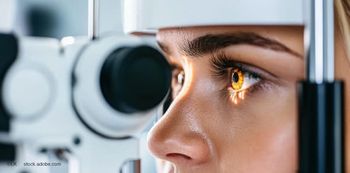
Malpositioned IOLs require special skills
San Francisco—Patients with malpositioned IOLs are likely to present more frequently in the future and surgeons need to develop individualized strategies and skill sets for managing this complication.
Several factors are important in these patients, such as working under low microscope illumination, learning iris suture fixation, "lasso" suturing to the sclera, and becoming comfortable working through the pars plana, according to Samuel Masket, MD, who spoke at the Fourth Annual San Francisco Cornea, Cataract, and Refractive Surgery Symposium.
IOLs may become malpositioned in the early or late postoperative periods as the result of a number of causes, explained Dr. Masket, clinical professor, Jules Stein Eye Institute, Los Angeles, and in private clinical practice in Los Angeles. But, recently, he pointed out, more and more patients have demonstrated capsular contraction and phimosis with late zonulysis. This occurs principally in the pseudoexfoliative syndromes, but there is a greater likelihood for the occurrence of phimosis in the anterior capsule in any patient with chronic breakdown of the blood-aqueous barrier. In addition, late dislocation can occur in patients who have had IOLs sutured to the sclera as a result of late suture hydrolysis or breakdown, perhaps 8 or 10 years later.
The value of standard capsular tension rings as an aid against capsule phimosis with progressive zonulysis is controversial, according to Dr. Masket. However, what is known, he explained, is that when a patient with pseudoexfoliation and late bag dislocation presents, the presence of a capsular tension ring is beneficial, because it can be sewn to the sclera, using the lasso technique.
"Another helpful tool for anterior segment surgeons is comfort when working through the pars plana, not only to remove vitreous when necessary, but also to be able to elevate loose IOLs and crystalline lenses into the anterior segment," Dr. Masket said.
Newsletter
Don’t miss out—get Ophthalmology Times updates on the latest clinical advancements and expert interviews, straight to your inbox.













































.png)


